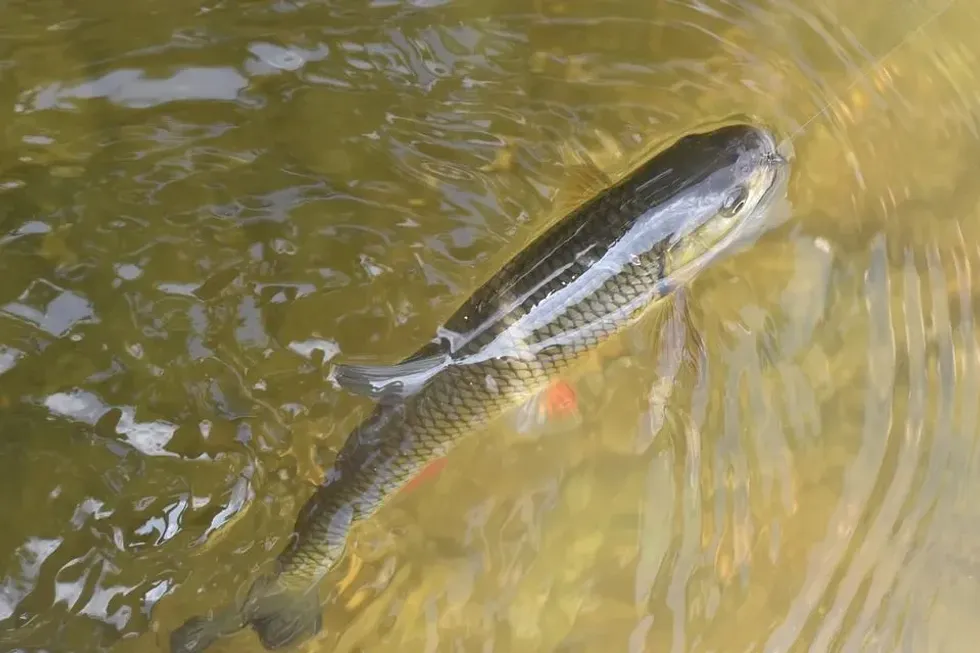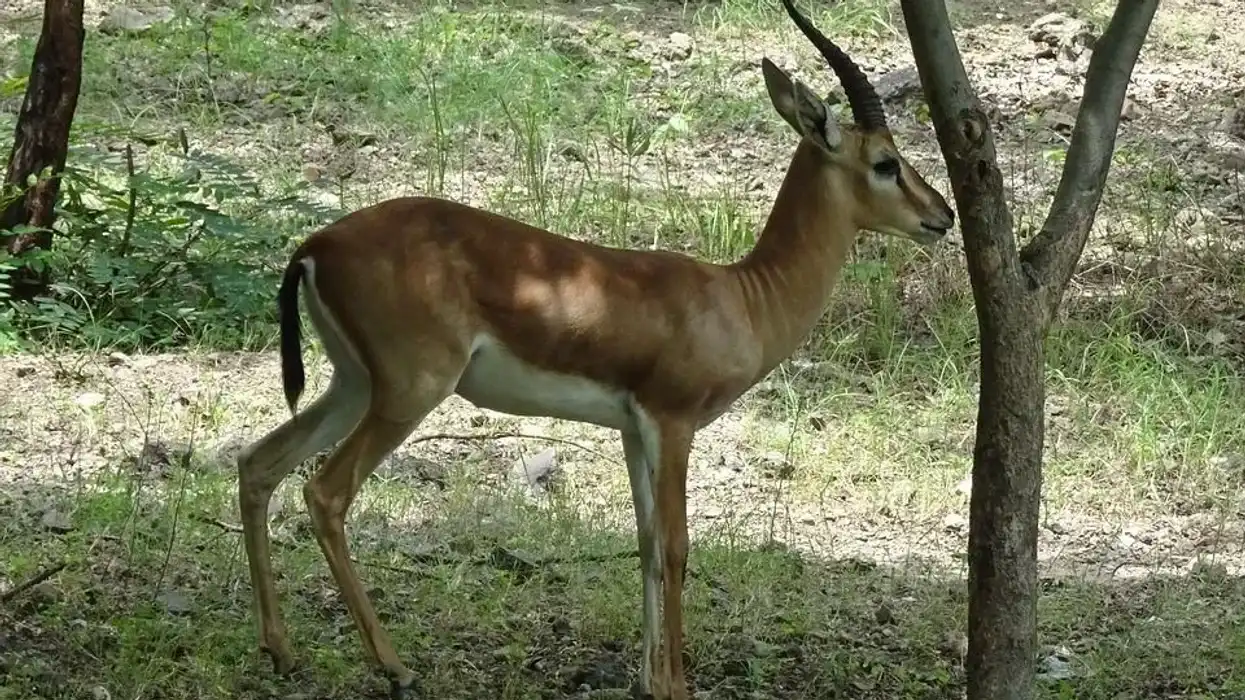If you go fishing in North America, you might catch a river chub (Nocomis micropogon) in your fishing nets as these fish live in clear, warm water bodies with gravel or rock bottoms. When kept in an aquarium they can enjoy the company of other fish.
They can grow to be quite large and will eat almost anything. River chubs in a stream are an excellent indicator of water quality as they are sensitive to pollution, turbidity, and siltation.
So anywhere you can find them will be a pleasant, beautiful, and undisturbed place in nature! River chubs are also often used as bait by fishermen looking for larger fish such as bass and catfish.
Read on to learn lots more river chub facts, but there are also numerous other species in our environment that you might be interested in learning about, so why not read about the triggerfish and robber fly too?
River Chub Interesting Facts
What type of animal is a river chub?
Nocomis micropogon (river chub) fish belong to a group of small freshwater fish called minnows.
What class of animal does a river chub belong to?
Nocomis micropogon (river chub) fish belong to the Actinopterygii class and the family of Cyprinidae.
How many river chubs are there in the world?
The river chub (Nocomis micropogon) is one of the most abundant fish within its range, however, the exact population of river chubs in the world is not currently known.
Where does a river chub live?
River chub fish can be found in clear water in medium to wide streams and rivers that have a mild to swift current. These rivers must also be flowing over a rock and gravel substrate.
What is a river chub's habitat?
The river chub fish is native to North America. Its habitat includes the majority of the Great Lakes and Appalachian regions.
Its habitat also extends from southeast Ontario to Michigan and Indiana and from the south to northwest South Carolina and northwest Alabama. Its distribution and habitat include the Great Lakes Basin, the Susquehanna River System, the Ottawa River System, the James River System, the Ohio River Basin, the Santee River, the Savannah River, and the Coosa River.
Who do river chubs live with?
These aquatic river chubs live in rivers and streams along with other river-dwelling species. If you wish to add it to your aquarium, it is good to know that they do not show aggressive behavior with lots of other fish species due to their peaceful nature.
How long does a river chub live?
Nocomis micropogon (river chub) fish have a life span of just five years.
How do they reproduce?
An adult male river chub fish builds a pebble nest at 1.6-3.3 ft (0.5-1 m) deep during the spawning season. After mating, the female fish produces 500-1000 eggs.
The male guards these eggs from rivals and the eggs hatch after five to six days as larvae. They then turn into juveniles in 57 days. These species become sexually mature at two years of age.
What is their conservation status?
There may be localized threats, but this species faces no major threats. This is why they have been listed as Least Concern for now.
River Chub Fun Facts
What do river chubs look like?
The river chub (Nocomis micropogon) is a dark olive color with large scales and orange-red fins. It has a sub-terminal or ventral mouth, which is slightly turned downward.
Its lower jaw is smaller than its upper jaw and it possesses barbels at the corners of its jaw. Mature adults acquire a pinkish-purple color and have enlarged heads with tubercles between their eyes.
How cute are they?
Every fish is unique in its way and the river chub is another beautiful fish that lives in a habitat of fresh river water. We think they are quite adorable, have you ever been lucky enough to see a river chub fish?
How do they communicate?
Like other minnows, river chub fish use chemical signals sensed by their olfactory nerves to identify predators and to communicate with their shoal mates. These chemicals are found in special cells known as alarm substance cells.
These are specialized skin cells that are released from an injured or killed minnow. Other species of their group can detect this chemical present in these cells and are then able to respond to the raised threat of predation.
How big is a river chub?
River chubs are much larger than other subspecies of chubs. River chubs can reach between 5.5-13 in (14-33 cm) in length.
How fast can a river chub swim?
Similar to other similar species of minnows, the average river chub fish swimming speed can also range from 0.36-0.76 mph (0.58-1.22 kph). This may not seem that fast, but for such a small fish it looks quite impressive!
How much does a river chub weigh?
The average weight of these river chub fish is yet to be determined. However, we do know that the average chub weighs 3-5 lb (1.4-2.3 kg).
What are the male and female names of the species?
There is no specific terminology used to distinguish between male and female river chubs, they are currently simply referred to as male river chub fish and female river chub fish.
What would you call a baby river chub?
Baby river chub fish begin their life as eggs and then develop into larvae, which are later referred to as juveniles.
What do they eat?
River chub fish feed primarily on aquatic invertebrates that they can find in their river habitat. They love to feed on insects, crustaceans, mollusks, and plants like filamentous algae, as well as a few fish and arachnids that are found in their water habitat.
More specifically, this species feeds on Caddisfly larvae and other flies' larvae such as Simulium and Chironomus larvae. Other insects that are eaten by the river chub include beetles, true bugs, bees, wasps, and ants, as well as baetids, stoneflies, laceflies, butterflies, and moths.
Are they poisonous?
No, the river chub is not a poisonous fish.
Would they make a good pet?
River chubs can be wonderful pets in an aquarium if you have the room and time to care for them.
Did you know...
Along with river chubs, one of the top freshwater fish is creek chubs. Creek chubs are among the most common minnows with a widespread distribution as they can withstand various environments, unlike river chubs which are only found in very specific water conditions.
Is river chub safe to eat?
River chubs are safe and healthy to eat and are commonly smoked and sold as food in the Great Lakes region.
How big can a river chub get?
River chubs reach a maximum length of 13 in (33 cm), with males being slightly larger than females. However, their average length is 5.5 in (14 cm).
Here at Kidadl, we have carefully created lots of interesting family-friendly animal facts for everyone to discover! Learn more about some other fish including the giant trevally and the hogfish
You can even occupy yourself at home by drawing one on our river chub coloring pages.










